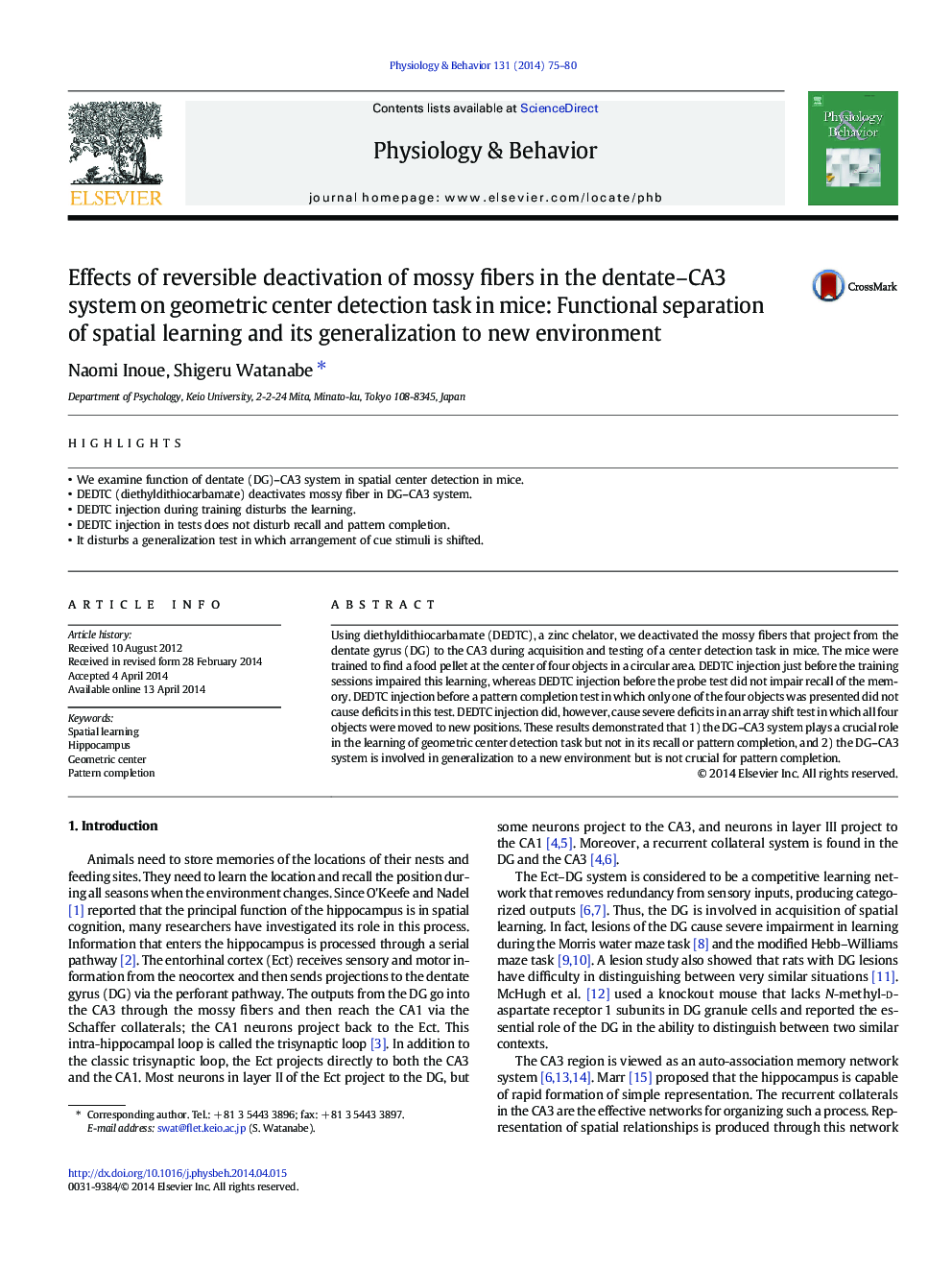| کد مقاله | کد نشریه | سال انتشار | مقاله انگلیسی | نسخه تمام متن |
|---|---|---|---|---|
| 5924069 | 1571186 | 2014 | 6 صفحه PDF | دانلود رایگان |

- We examine function of dentate (DG)-CA3 system in spatial center detection in mice.
- DEDTC (diethyldithiocarbamate) deactivates mossy fiber in DG-CA3 system.
- DEDTC injection during training disturbs the learning.
- DEDTC injection in tests does not disturb recall and pattern completion.
- It disturbs a generalization test in which arrangement of cue stimuli is shifted.
Using diethyldithiocarbamate (DEDTC), a zinc chelator, we deactivated the mossy fibers that project from the dentate gyrus (DG) to the CA3 during acquisition and testing of a center detection task in mice. The mice were trained to find a food pellet at the center of four objects in a circular area. DEDTC injection just before the training sessions impaired this learning, whereas DEDTC injection before the probe test did not impair recall of the memory. DEDTC injection before a pattern completion test in which only one of the four objects was presented did not cause deficits in this test. DEDTC injection did, however, cause severe deficits in an array shift test in which all four objects were moved to new positions. These results demonstrated that 1) the DG-CA3 system plays a crucial role in the learning of geometric center detection task but not in its recall or pattern completion, and 2) the DG-CA3 system is involved in generalization to a new environment but is not crucial for pattern completion.
Journal: Physiology & Behavior - Volume 131, 28 May 2014, Pages 75-80